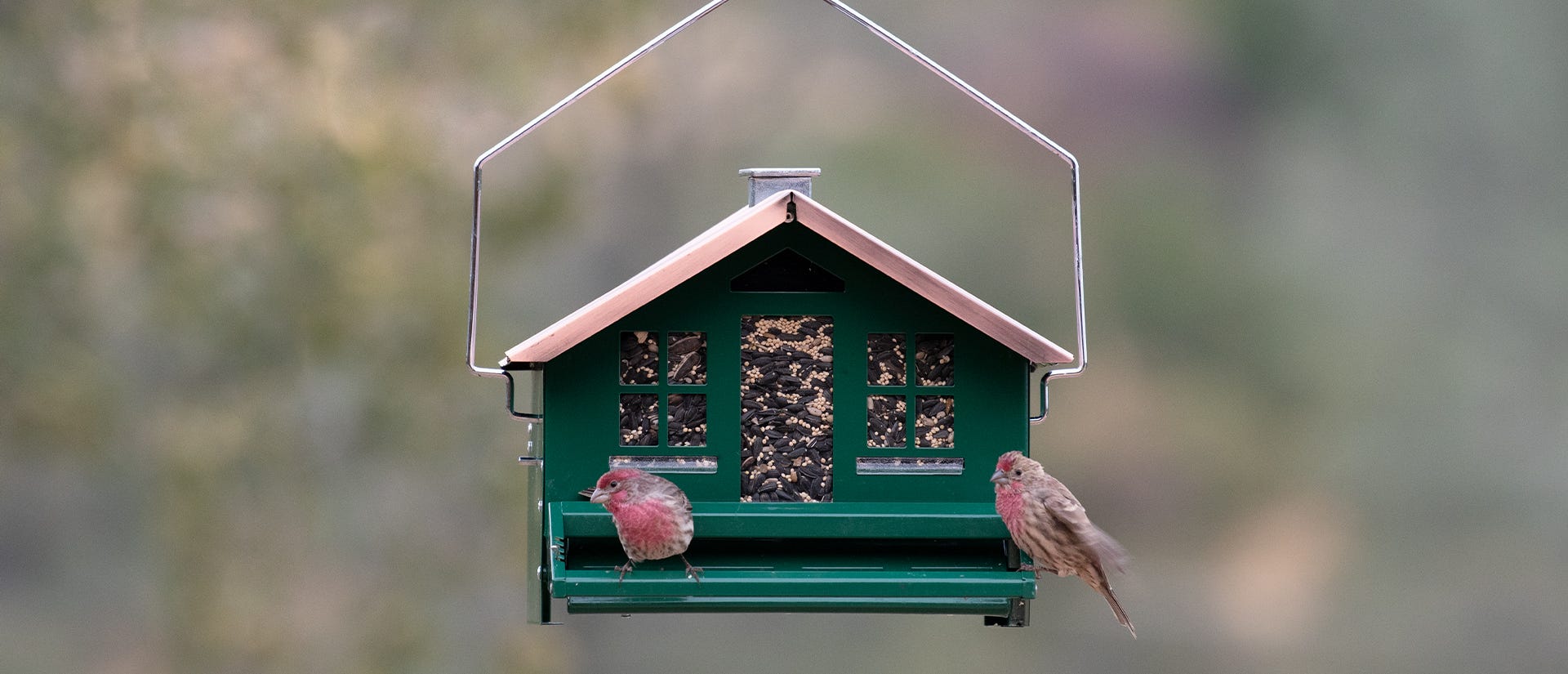
Our autumn menus are full of fabulous tastes, from elaborate tailgate grilling to crisp apples to all things pumpkin spice. Bird diets change in fall as well, allowing birds to take advantage of the most plentiful food supplies. Birders who understand those dietary changes can be better prepared to feed backyard birds in autumn and help them adapt to the shifting seasons.
Birds’ Favorite Fall Foods
While summer birds snack on protein-rich insects as they nourish baby birds, their dietary needs change in fall when insect populations grow smaller. The foods birds prefer in autumn are high in fat, sugar, and calories. This helps birds build up their body weight and store extra fat as fuel for migration.
Natural foods that help birds be best prepared in autumn include:
- Seeds and grain from late-ripening grasses and flowers
- Nuts of all types, including pine nuts
- Sugar-rich fall fruits, including grapes and late berries
- Nectar from the last flowers blooming in autumn
Autumn Eating Behaviors
Hyperphagia
Just as birds switch to different foods when the seasons change, their feeding behaviors also change. Migratory birds feed more frantically in autumn, driven by hormonal changes that compel them to overeat and gain weight. This increased appetite, called hyperphagia, helps small birds gain large amounts of weight to fuel their migration. Some birds may nearly double their overall weight in fall! This extra energy is essential during migration, when the birds may not be stopping to feed during their journeys, or food sources are much less reliable along the way.
Caching
Birds that do not migrate also change their feeding habits as winter approaches. Many jays, woodpeckers, nuthatches, chickadees, and titmice will begin caching food – storing it away instead of eating every morsel. Seeds may be tucked into crevices in rocks or tree bark, and nuts could be pushed into cavities, buried in the ground, or covered with fallen leaves. Different birds may use dozens or hundreds of hiding places to store food in autumn, and they will revisit those caches throughout the winter as other foods dwindle.
Feeding Birds in the Fall
It is a myth that feeding birds in fall will keep them from migrating. In fact, the right foods help birds prepare for arduous journeys and will help traveling birds rest and refuel along the way so they can migrate successfully. Furthermore, feeding autumn birds teaches both birds that are passing through as well as recently-hatched young birds that the yard offers a reliable food supply. There are a few things you can do around your yard to ensure that there are plenty of resources to go around:
- Switching to larger feeders in fall can ensure the birds have plenty of food to eat.
- Leave natural foods in the yard intact, including leaf litter, and avoid unnecessary pruning at a time when birds will happily clean the last seeds, ripe fruits, or insects from the plants.
- Be sure bird baths are fresh and full so visiting birds also have a source of water for drinking and bathing.
The Best Foods to Offer Birds in Autumn

In addition to natural foods from berry bushes, nut-bearing trees, and ripe grasses, try offering birds these foods:
- Sunflower Seeds - These are the go-to seeds for attracting and feeding the most backyard birds. Hulled sunflower seeds offer fast energy for any visitors, while in-shell sunflower seeds are better for larger songbirds and any birds caching seeds for winter use. Birds will also pluck seeds right off ripe sunflower heads if available.
- Nyjer Seed - These tiny seeds are very oily and high in fat and calories, making them a favorite for many fall and winter finches, including goldfinches, redpolls, crossbills, and siskins. Offer Nyjer seed in mesh feeders or sock feeders that tiny birds will cling to for easy feeding.
- Peanuts and Peanut Butter - Rich in fat and calories, peanuts and peanut butter are great foods for woodpeckers, jays, nuthatches, and many other birds. In-shell nuts will quickly be hidden for winter storage, while peanut hearts and peanut butter are a fast energy source on autumn days.
- Suet - The ultimate high-fat food for autumn birds, suet is great for woodpeckers, titmice, wrens, chickadees, bluebirds, and jays. You can offer suet in cakes or blocks, crumbled, chopped, or shredded for smaller birds. Plain suet is fine, or opt for a variety mixed with seed, bits of nuts, or even dried insects for more nutrition.
- Cracked Corn - Though lower in overall nutritional value, cracked corn is a hearty carbohydrate that will help birds fuel up, and it is less expensive for fulfilling big autumn appetites. Sprinkle cracked corn on the ground for grouse, quail, doves, sparrows, turkeys, and other ground-feeding birds.
- Nectar - Though hummingbirds and orioles head south in autumn, offering nectar right into the cold season will ensure they have an easy food source to visit as they travel. Take steps to keep nectar from freezing in late autumn. Remove nectar feeders completely when they haven’t been used in 10 days or more.
Autumn is a season of abundance. By recognizing how birds take advantage of that abundance to adapt their diets, birders can take advantage of different bird foods and feeding techniques to enjoy all the best of fall birding right in the backyard.







